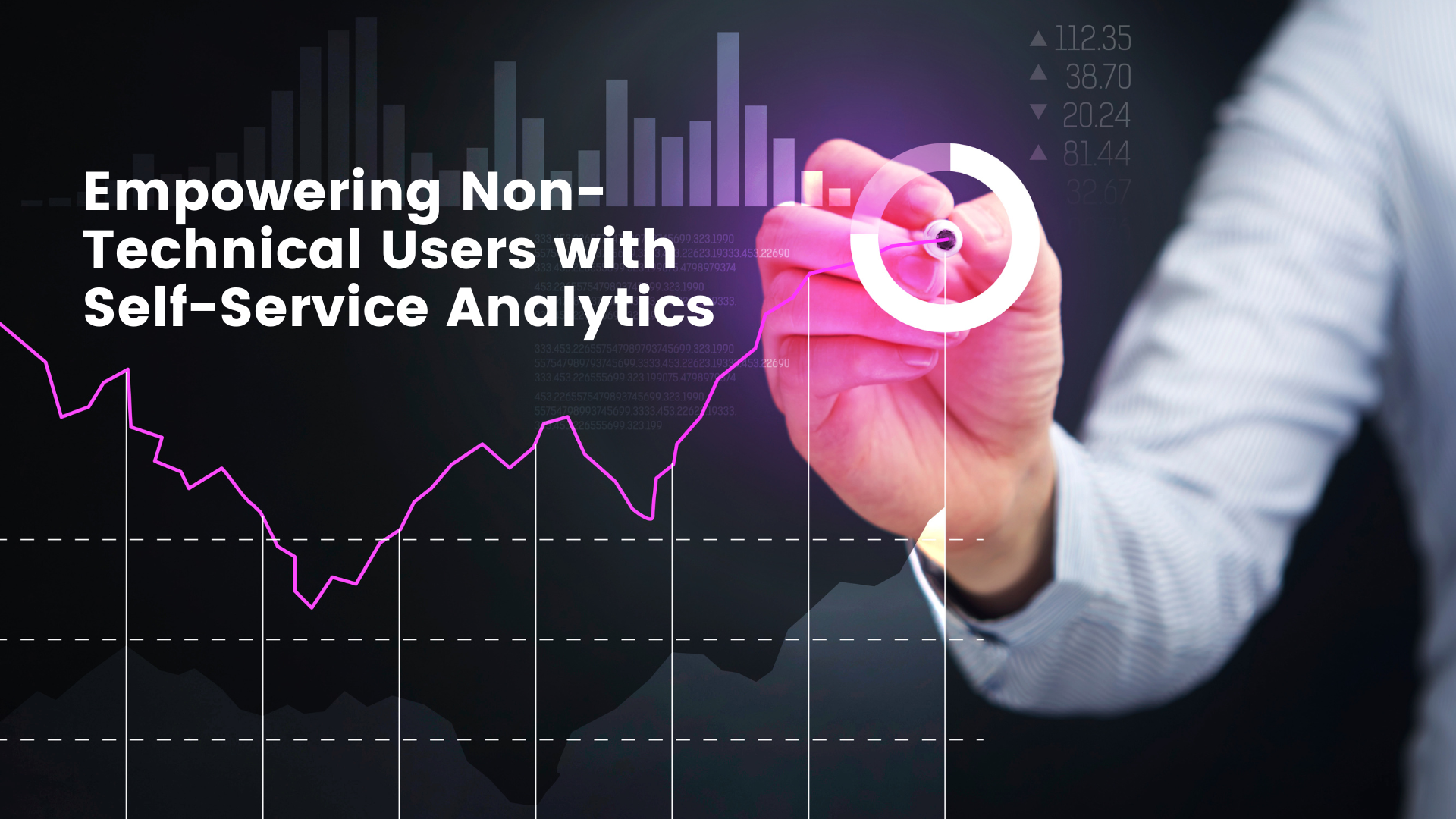Empowering Non-Technical Users with Self-Service Analytics
 Stella Jacob
Stella Jacob
Introduction
In the digital age, data has become a precious commodity, driving business decisions and strategies. However, the ability to extract valuable insights from data has traditionally been limited to technical experts, such as data analysts and scientists. This has created a gap between data and decision-makers. To bridge this gap, data analytics compan are introducing Self-Service Analytics, empowering non-technical users to derive insights independently. In this blog, we will explore the concept of self-service analytics, its benefits, and how it revolutionizes data-driven decision-making.
Understanding Self-Service Analytics
Self-Service Analytics is a user-friendly approach to data analysis that enables non-technical users to access, manipulate, and interpret data without relying on IT or data experts. Through intuitive interfaces and drag-and-drop functionalities, self-service analytics tools empower users to explore data, create visualizations, and generate reports effortlessly.
The Rise of Self-Service Analytics
The adoption of self-service analytics has gained momentum across industries due to several key factors:
Democratization of Data: Self-service analytics breaks down data silos and makes data accessible to a wider audience. It empowers business users, managers, and executives to be directly involved in data exploration and decision-making processes.
Faster Insights: With self-service analytics, users no longer have to wait for data analysts to generate reports. They can access real-time data, perform ad-hoc analyses, and obtain insights instantly.
Reduced Dependency on IT: By enabling non-technical users to perform data analysis independently, self-service analytics reduces the burden on IT departments. This allows IT teams to focus on more strategic tasks.
Flexibility and Agility: Self-service analytics allows users to customize and modify analyses on the fly, adapting quickly to changing business needs and market dynamics.
Key Features of Self-Service Analytics Tools
Leading data analytics companies offer self-service analytics tools equipped with essential features:
User-Friendly Interface: Intuitive interfaces with drag-and-drop functionalities make data exploration easy for non-technical users.
Data Visualization: Rich visualizations, such as charts and graphs, facilitate better understanding of complex data patterns.
Data Connectors: Seamless integration with various data sources enables users to pull in data from multiple platforms.
Data Preparation: Self-service analytics tools often provide data cleaning and transformation capabilities, ensuring data accuracy.
Collaboration: Collaboration features enable teams to share analyses, dashboards, and reports effortlessly.
Benefits of Self-Service Analytics
Empowering Data-Driven Decision-Making: Non-technical users can access real-time insights, enabling data-driven decision-making at all levels of the organization.
Cost-Effectiveness: Reducing the reliance on data analysts and IT resources can result in cost savings for the organization.
Improved Productivity: Self-service analytics expedites the process of data analysis, enabling users to focus on strategic tasks rather than manual data retrieval and manipulation.
Enhanced Data Literacy: With self-service analytics, employees develop data literacy, fostering a culture of data-driven decision-making.
Real-Time Response to Market Trends: The agility of self-service analytics allows businesses to respond quickly to market changes and capitalize on emerging opportunities.
Conclusion
Data analytics companies have paved the way for a data-driven revolution by introducing self-service analytics. By empowering non-technical users to independently explore and analyze data, businesses can harness the full potential of their data assets. Self-service analytics not only bridges the gap between data and decision-makers but also enhances productivity, agility, and data literacy across the organization. As self-service analytics continues to evolve, it is poised to play a central role in shaping a successful, data-driven future for businesses worldwide.
Subscribe to my newsletter
Read articles from Stella Jacob directly inside your inbox. Subscribe to the newsletter, and don't miss out.
Written by
